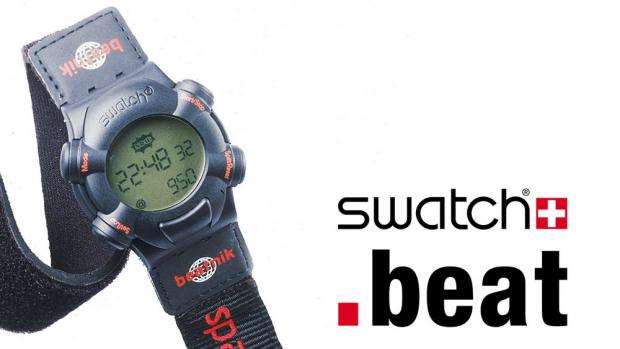
Technology is an incredibly capricious thing. What can be popular and on-trend one day, will suddenly switch to being outmoded or practically prehistoric.
Take the humble feature phone with flip screens, some games, and the world of WAP web-browsing. It all seemed so high-tech, phones were getting smaller, and then June 2007 rolled around and Apple's iPhone hit the market. Anything other than a smartphone just wasn't worth having.
I'm sure you've been racked with sleepless nights due to wondering what the worst tech products are. And that's why we've come along to help you with our list the five worst ideas in tech history.
Next: the worst ideas in tech history
5. Nokia N-Gage
In fairness, the N-Gage was ahead of it's time.
Looking to break into the space of handheld gaming through a mobile phone, the N-Gage really did deliver console-like visuals better than any handheld console could muster. Nokia saw the need for a really portable and useful games device, and thought they could capitalise on the space.
If you think about it, what Nokia was trying to do is what Apple managed to succeed with. And now mobile gaming is the biggest market for video games. So, there was definitely something in it.
Unfortunately, Nokia wasn't going to be the company to break into that space. The N-Gage was cumbersome as a mobile, and poorly designed as a gaming device.
Fancied playing Tony Hawk's Pro Skater instead of Tomb Raider? No problem! Just prise the back cover off, take out the battery, and then change the game cartridge and reboot your phone! Simple really. Game cartridges weren't even all that portable, so most of the time you'd just have one game on the go per trip.
As a phone it had a peculiar keyboard positioned either side of a tiny portrait screen. Taking calls required you to put the phone's top edge to the side of your face, essentially making it look like you had one huge ear. While the N-Gage 2 was a slightly better follow-up, this is an idea that sorely needed to die.
Next: number four
4. :CueCat
:CueCat, yes it is written with a preceding colon, was a smart idea that was just terribly executed.
CueCat allowed for magazine readers to jump directly to a product or article online through a printed barcode, or Cue. Using the scanner, which was inexplicably shaped like a cat, users could scan a Cue to find the content they so sorely couldn't Google.
CueCat attached to your computer via USB or, if your 2000's computer didn't have the luxury of a USB port, through a PS/2 keyboard port. Think of it as a process similar to using a QR code, except instead of just being rather pointless, it was cumbersome to use too.
What really killed CueCat was privacy concerns over data collection. Its inventor, Digital Convergence, did nothing to help these woes by registering “digitaldemographics.com” and requiring users to list their home address when registering their CueCat.
After a data breach revealed over 100,000 CueCat user's identities, CueCat was practically done for.
Next: number three
3. Honda U3-X
While many deride the Segway for being a stupid transportation idea that failed (although we don't quite see it as a failure), Honda's U3-X certainly deserves to be questioned.
Announced in 2009, the U3-X is a one-wheeled personal transportation device that's yet to see the light of day. It allowed riders to travel 6km per hour, so not quite a brisk walk, and was powered with a lithium-ion battery that lasted around an hour. Basically, you could go almost nowhere using it.
To stay upright and move it used the same balancing technique that Honda's robot ASIMO used to stand upright, run and jump. As an invention it's certainly intriguing, but it's by far a bigger failure than the Segway was.
While it may not have ever turned up, at least the U3-X gave us this wonderfully weird announcement video.
Next: the top two worst ideas in technology history
2. Microsoft Bob
You can't say that Microsoft didn't try to innovate, and the infamously awful Microsoft Bob is a prime example.
Released in 1995, before Windows 95 existed, Microsoft Bob was Microsoft's answer to making the home computer more accessible to consumers. It did away with the need for MS DOS, Windows, or the idea of navigating drives and discs.
Instead, Microsoft Bob presented you with a home inside of your computer. Here you could find rooms that could be redecorated, rearranged, or just completely removed. These rooms would mimic those of a home, containing a kitchen, bedroom, hallway, etc.
Items in MS Bob would mirror those in the computer, so clicking on a clock would open Windows Clock, a calendar represents Windows' calendar, a pen and paper represents the word processor, and so forth. It was incredibly customisable for the time, offering users a way to rebuild their home experience as they liked it.
The issue is, as we're sure you can imagine, it was terrible. Experienced PC users thought it horrible, and you're more general consumer just didn't see the appeal to having a cartoon house inside their computer.
In fact, the only legacy Bob had was its doggy mascot Rover, which reappeared in Windows XP as the search assistant.
If you're still curious, you can watch a tutorial of MS Bob below.
Next: the worst idea in tech history
1. Swatch Internet Time
Switzerland is known for its excellent timepieces and Swatch is a world-renowned brand. But, in 1998 it became too big for its own boots and tried to reinvent time itself.
This new time standard was known as Swatch Internet Time and contained no time zones to learn. The new time scale of Biel Meantime (BMT) would be the epicentre for all connected devices and users. The best thing about it? It wasn't confusing to read or understand at all!
Instead of hours and minutes, the solar day is divided into 1,000 parts known as “.beats”. Each .beat lasts for 1 minute and 26.4 seconds. Times were always noted as a three-digit number out of 1000 after midnight, so a time of @400 would mean 400 .beats past midnight, 400/1000 of a day, so around 8:30 in the morning. Got it? Good.
Because nobody really did, actually, get how it all worked. After a short-lived time being used on Swatch .beat watches, a short stint on a few websites, and even having a PHP command, Swatch Internet Time fell by the wayside in favour of a system as old as time itself.
This article originally appeared at pcpro.co.uk















.jpg&w=100&c=1&s=0)
_(8).jpg&w=100&c=1&s=0)







.jpg&q=95&h=298&w=480&c=1&s=1)





